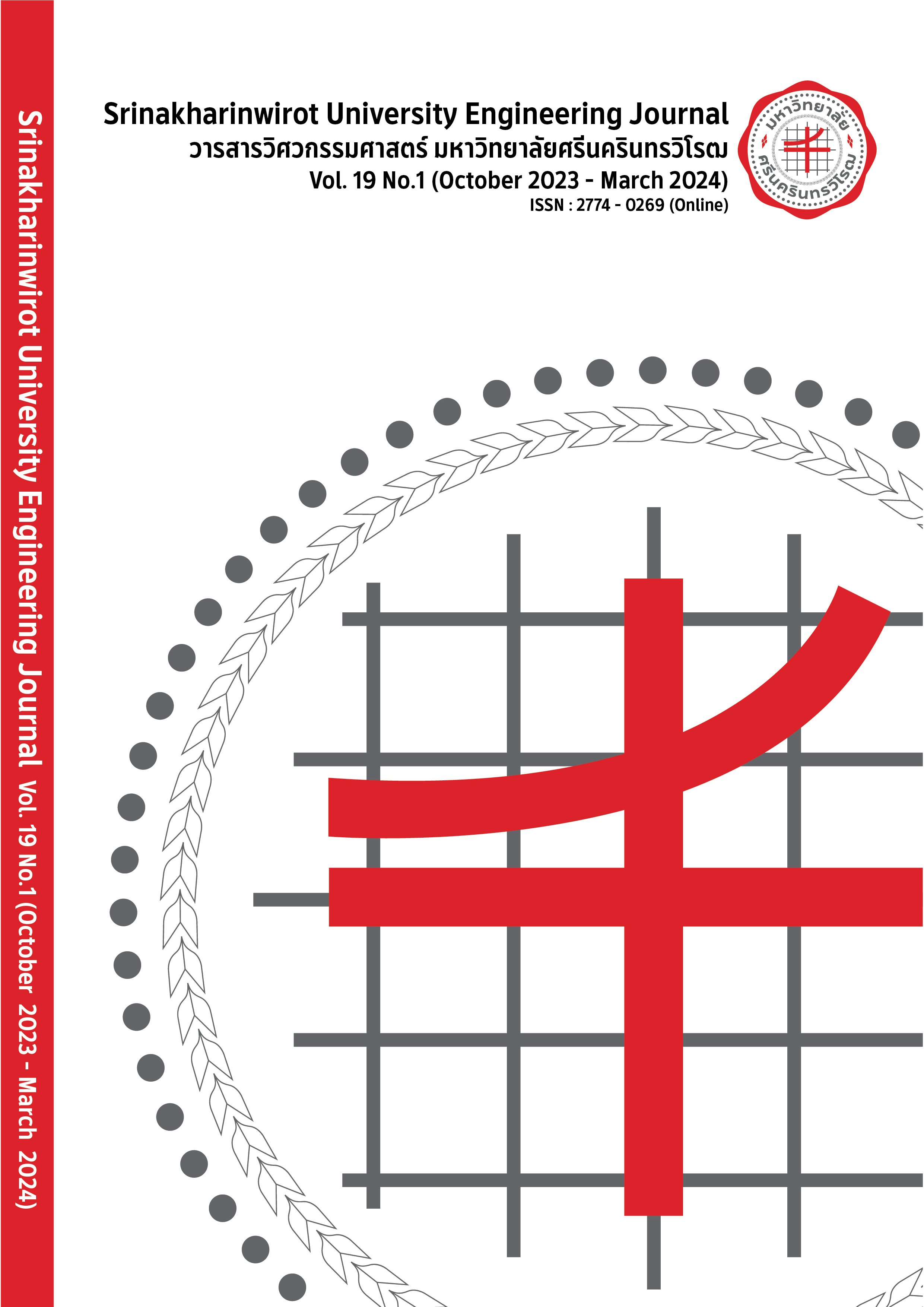A Study of Factors Affecting on Brass Clay Forming Process by Sculping
Main Article Content
Abstract
This research aimed to study the factor affecting the brass clay forming process by sculpting and applies with the method of factorial design of experiment and using the statistical program to analyze and transform the result to find the optimal conditions for forming brass clay. The study starts with learning about controllable factors. The four independent variables were the type of binders, percentage of binders used in mixing, temperature and duration of sintering. The results of physical and mechanical properties obtained were analyzed and sorted the optimal condition to select the most optimal condition for forming the brass clay. It was found that the most optimal condition for forming by sculpting is carboxymethylcellulose 1% sintered at 900 Celsius for 1 hour. This condition has volume shrinkage after forming about 0.76%. The physical characteristics of workpieces after forming and removing the binder have good stability, no separation of layers or cracks. After sintering, the workpiece has completely combined and the volume shrinkage was 17.4%. The density was 5.31 and the surface hardness was 37.73 HV. The result of applying the aforementioned conditions by sculpting shows that the clay has the flexibility and be able to sculpt to any shape easily. Besides, it can be applied together with stamping, cutting, rolling, patching and forming.
Article Details

This work is licensed under a Creative Commons Attribution-NonCommercial-NoDerivatives 4.0 International License.
Copyright belongs to Srinakharinwirot University Engineering Journal
References
S. Boonmee, Powder Metallurgy Handbook. Pathum Thani: Thailand Powder Metallurgy Association, 2020.
M. Nelson. (2022). How to add silver accents to bronze and copper metal clay [Online]. Available:
https://www.riogrande.com/knowledge-hub/videos/silver-accents-vid/
P. Thongnopkun. (2012). Silver jewelry forming from nano-silver clay [Online]. Available: https://www.chanthaburi.buu.ac.th/~gjr/File_InformationCenter/90.pdf
Metal Adventures. (2006). Your guide to fastfire bronzclay [Online]. Available: https://www.seattlefindings.com/assets/images/Product Instructions PDF/Fastfire-BronzClayGuide.pdf
R. Medal. (2011). Clearing the air on carbon firing [Online]. Available:
P. Chutima, Engineering Design of Experiment. Bangkok: Chulalongkorn University Press, 2002.
P. Thongnopkun, S. Tanyapirom and T. Chanduang. (2012). Innovation for fabrication of complex shape silver jewelry from nano-silver clay [Online]. Available:
http://dspace.lib.buu.ac.th/xmlui/handle/1234567890/384
S. Supansomboon, C. Tangmansugarit, N. Khaocharee and A. Munpakdee, “Effect of binder on the physical properties of silver clay for jewelry”, SWU Sci. J., vol.26, no.1, pp. 131-147, 2010.
T. On-in, S. Janjirawittaya and A. Munpakdee. (2015). The influence of solder joins on the physical and mechanical properties of copper clay [Online]. Available:
http://science.swu.ac.th/Portals/22/SciEvent/Students/2_3_Jun_58_Present/posters/9_jew/9_jew_20.jpg
A. Bunchavimonchet, “Effects of binder composition on metal injection molding,” M.S. thesis, Dept. Metallurgical. Eng., Chulalongkorn Univ., Bangkok, Thailand, 2001.


